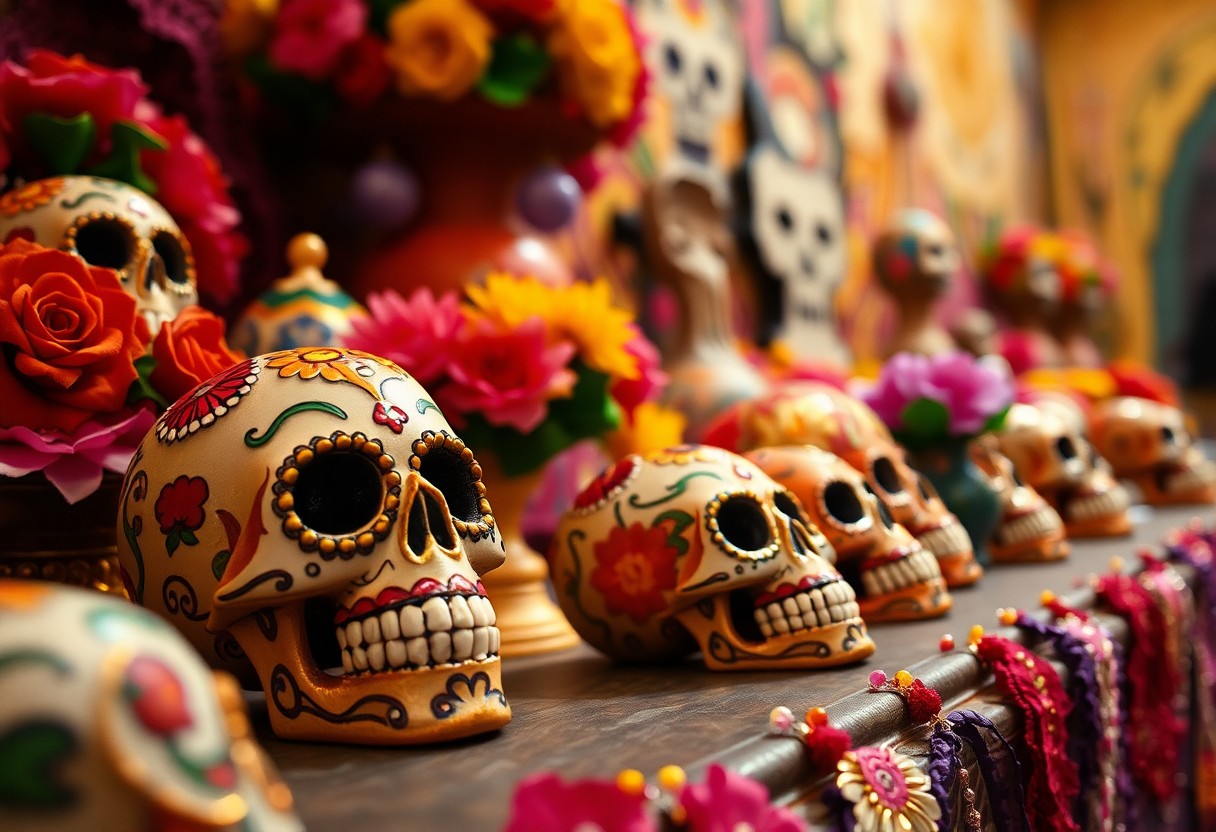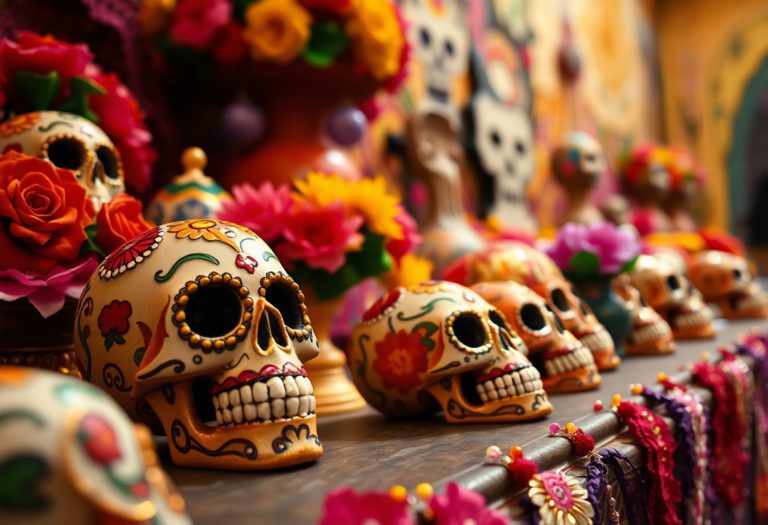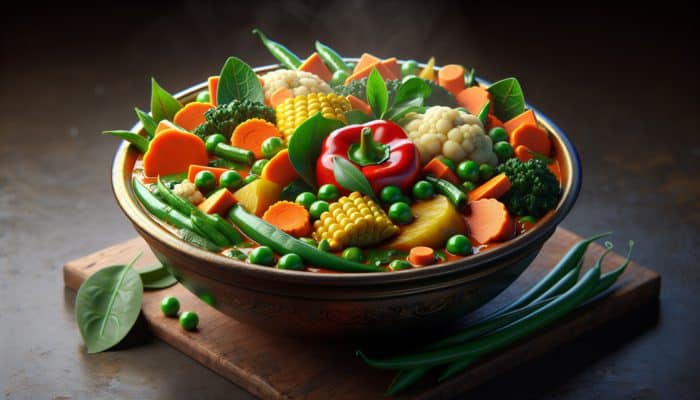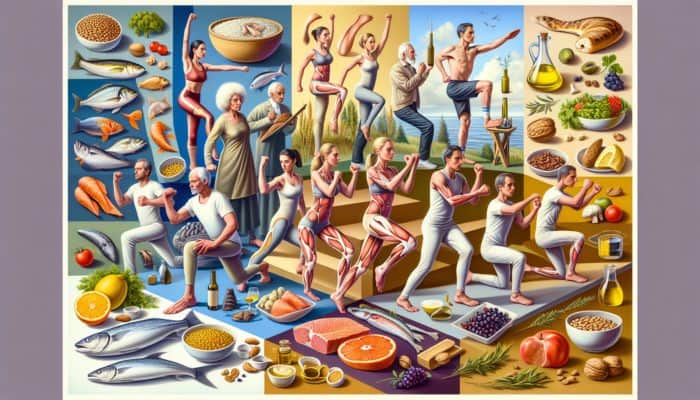Alfeñiques are beautiful handcrafted sugar figures that play a vital role in the vibrant celebrations of Día de Muertos, especially in San Miguel de Allende. These delightful creations, often shaped into skulls, animals, and other culturally significant forms, serve as tributes to honor the memories of loved ones who have passed away. They embellish ofrendas, or altars, during this poignant festival, seamlessly blending centuries-old traditions with striking artistry. The art of alfeñiques is a remarkable fusion of Arabic, Spanish, and Mexican cultural influences, resulting in a cherished craft that continues to flourish. The annual Alfeñique Fair in San Miguel de Allende is a spectacular celebration of this artistry, offering visitors a unique opportunity to witness skilled artisans and immerse themselves in the cultural richness of Día de Muertos. Explore how these sweet artistic expressions forge a deep connection between life, death, and cultural heritage.
Understanding the Profound Cultural Importance of Alfeñiques
Embark on an enlightening journey into the enchanting world of alfeñiques by uncovering their profound cultural importance. These intricately handcrafted sugar paste figures are often molded into skulls, animals, and other meaningful shapes that are intimately linked to the Día de Muertos celebrations. Far more than just festive decorations, these delightful sugary creations symbolize heartfelt tributes to those who have departed, enriching the beauty and vibrancy of ofrendas across Mexico. The joyful presence of alfeñiques infuses the celebrations with both reverence and joy, making them an essential and cherished aspect of this deeply significant tradition, resonating profoundly with both the living and the spirits of the deceased.
Exploring the Rich Symbolism and Significance of Alfeñiques
Alfeñiques transcend the realm of simple confections; they embody powerful symbols that reflect the intricate themes of life, death, and the enduring connection between the two. Crafted with meticulous care, these sugar figures encapsulate the essence of existence and the cherished memories of those who are no longer with us. The vibrant colors and elaborate designs not only celebrate life but also serve as meaningful tributes placed upon altars, reminding us of the bonds that persist beyond death. Through their artistic expression, alfeñiques inspire deeper contemplation on mortality and the continuous cycle of life, reinforcing the notion that love and memory are everlasting.
Exploring Traditional Shapes and Symbolic Colors of Alfeñiques
Delve into the impressive array of traditional shapes found in alfeñiques, including skulls, crosses, animals, and flowers, each laden with significant symbolism. Skulls, for example, signify the eternal cycle of life and death, while animals often represent spiritual guides accompanying souls on their journeys. The colors chosen for these creations carry their own importance; vibrant hues such as red, yellow, and blue symbolize vitality and joy, whereas white represents purity and remembrance. Understanding the shapes and colors of alfeñiques is crucial, as they are intentional and rich with cultural meaning that enhances their role during Día de Muertos. Iconic skulls, or calaveras, are often personalized with names or unique designs to pay homage to specific individuals, making each piece a distinctive tribute.
Additionally, animals such as dogs and deer are believed to serve as spiritual guides, while vibrant flowers symbolize the fleeting beauty of life. The dynamic use of bright colors ensures that these figures stand out on altars, creating a welcoming and celebratory atmosphere during the Día de Muertos festivities. They invite everyone to reflect on the beauty of life and the cherished memories of those who have departed.

Tracing the Historical Roots and Significance of Alfeñiques
The term alfeñique traces its origins back to the Arabic word alfainid, suggesting a rich historical journey that commenced during the Moorish period in Spain. This delightful art form was introduced to Spain, where it was originally crafted using almonds, sugar, and egg whites. When Spanish colonizers ventured into the Americas, they carried this tradition with them, which then transformed significantly in Mexico by incorporating local ingredients and cultural practices. Over time, artisans have perfected the sugar paste recipe, leading to the whimsical and colorful figures that have become synonymous with Día de Muertos today. These sugar creations not only reflect Mexico’s rich cultural tapestry but also showcase an extraordinary capacity to adapt and blend foreign influences into something uniquely Mexican.
Unraveling the Arabic and Spanish Influences on Alfeñique Craftsmanship
One of the most captivating aspects of alfeñiques is their unique blend of Arabic and Spanish craftsmanship. The technique of creating sugar paste was introduced to Spain by the Moors, who skillfully combined almonds and sugar to craft exquisite confections. As Spanish settlers arrived in the Americas, they transported this cherished tradition, which was later adapted by Mexican artisans who utilized locally sourced ingredients in place of almonds. This transformation beautifully illustrates the adaptability and creativity inherent in Mexican artistry, as it weaves diverse cultural influences into the vibrant craft of alfeñiques, which continues to thrive today.
Appreciating the Evolution of Alfeñiques within Mexican Culture
To truly appreciate the evolution of alfeñiques in the context of Mexican culture, one must explore how they have become deeply embedded in the significance of Día de Muertos. Initially created as delightful treats, these sugar figures have gradually acquired profound symbolic meanings, representing the complex relationship between life, death, and memory. Today, artisans skillfully craft alfeñiques into various forms, including skulls, animals, and other figures, each adorned with vibrant colors and intricate details. These creations serve not only as decorative pieces but also as powerful expressions of love and remembrance for those who have passed on, celebrating the cyclical nature of life and death.
As Día de Muertos has gained recognition as a national celebration, alfeñiques have emerged as a central element of ofrendas, significantly enhancing their importance. Artisans have begun personalizing these pieces with names, dates, and heartfelt messages, imbuing them with deeper meanings for families. In San Miguel de Allende, the annual Alfeñique Fair serves as a vibrant showcase of this evolution, blending traditional designs with contemporary creativity. The fair emphasizes the lasting significance of alfeñiques in Mexican culture, ensuring that this beautiful art form continues to inspire and thrive for future generations.
The Essential Role of Alfeñiques in Día de Muertos Ofrendas
Among the most cherished elements adorning a Día de Muertos ofrenda are alfeñiques. These exquisite sugar figures encapsulate the sweetness of life alongside the fond memories of those who have departed. When displayed on altars, they contribute vibrant colors and intricate designs, fostering a joyful ambiance that celebrates the duality of life and death. Alfeñiques often feature personalized designs, transforming them into heartfelt tributes honoring the spirits being remembered. In San Miguel de Allende, these enchanting sugar creations are pivotal to the tradition, reflecting the town’s deep-rooted connection to Día de Muertos and its rich cultural heritage.
Exploring the Symbolism of Alfeñiques on Ofrendas
The symbolism of alfeñiques on ofrendas is intricately woven into the fabric of Mexican culture, where these sugar figures frequently take the form of skulls, crosses, or animals, each carrying its own rich significance. Skulls poignantly represent the cycle of life and death, while crosses symbolize faith and protective blessings in the afterlife. Animals, such as butterflies or dogs, signify the soul’s journey or loyalty to loved ones. The vibrant colors and intricate craftsmanship of alfeñiques infuse an uplifting sense of celebration into the altar, serving as beautiful reminders of the interconnectedness of life and the act of remembrance.
Personalized Alfeñiques: The Meaning Behind the Craft
The deeply personal touch of alfeñiques greatly enhances their significance. Artisans frequently inscribe names or meaningful messages on the figures, dedicating them to specific loved ones. This personalization transforms the sugar art into a heartfelt tribute, creating a lasting connection to the memory of those who have passed. In San Miguel de Allende, families take great pride in crafting or selecting alfeñiques that reflect the unique personality or interests of their loved ones, ensuring that each piece is special and imbued with love.
Furthermore, the personalization process extends beyond merely inscribing names. Families often choose specific shapes, colors, or designs that resonate with their loved ones. For example, crafting a favorite animal or flower into the figure adds additional layers of meaning. This meticulous attention to detail ensures that the ofrenda serves not just as a display but as a profound connection to the past. In San Miguel de Allende, this cherished tradition is celebrated with immense care, as the community unites to honor their heritage and loved ones through these sweet, symbolic creations.
Experience the Vibrant Alfeñique Fair in San Miguel de Allende
Many travelers to San Miguel de Allende find themselves captivated by the annual Alfeñique Fair, a lively celebration of sugar artistry during the Día de Muertos festivities. Held at Plaza de la Soledad, near the Oratorio Church, this fair is a true visual spectacle, showcasing the intricate and skillful craftsmanship of local artisans. Here, visitors can explore a diverse array of alfeñiques, from classic skulls and crosses to imaginative animal and floral designs. The fair embodies a dynamic blend of art, culture, and community, providing a unique opportunity to immerse oneself in the rich traditions of Día de Muertos within one of Mexico’s most picturesque destinations.
Highlighting the Unmissable Features of the Alfeñique Fair
The Alfeñique Fair in San Miguel de Allende is an unmissable event during Día de Muertos. You’ll find rows of stalls brimming with colorful sugar figures, each crafted with precision and care, capturing the festival’s joyous spirit. The fair draws both locals and tourists, creating an electrifying atmosphere filled with excitement. Visitors can witness artisans demonstrating their techniques, learn about the history and significance of alfeñiques, and even have the opportunity to try their hand at crafting their own creations. This fair provides an invaluable opportunity to delve into the traditions of San Miguel de Allende while supporting local artisans.
Celebrating Artisan Craftsmanship and the Cultural Importance of Alfeñiques
A visit to the Alfeñique Fair reveals the profound cultural significance of these sugar creations, showcasing the artistry and dedication of the artisans. You’ll have the chance to see how artisans pour their creativity into each piece, skillfully blending traditional designs with modern interpretations that resonate with contemporary audiences. The fair emphasizes the crucial role of alfeñiques in Día de Muertos celebrations, where they symbolize both the sweetness of life and the cherished memory of departed loved ones. By purchasing these handmade figures, you actively contribute to preserving a centuries-old tradition while honoring the artisans’ skill and commitment to their craft.
With over 50 local artisans participating annually, the fair stands as a testament to the enduring legacy of alfeñiques in San Miguel de Allende. Each piece reflects the region’s rich cultural heritage, from vibrant colors to intricate designs. The fair also serves as a powerful reminder of the importance of community in preserving these treasured traditions. By attending, you not only witness the artistry but also become part of a celebration that links the past and present, ensuring these customs are cherished and passed down to future generations.

Diverse Forms of Alfeñiques and Their Symbolic Meanings
Not all alfeñiques are created equal; these sugar masterpieces come in various forms, each with its own unique meaning and purpose. Here are some of the most common types of alfeñiques:
- Skulls (calaveras): These figures represent deceased loved ones and are often personalized with names to honor specific individuals.
- Animals: Symbolizing spiritual guides or beloved pets of the departed, these figures reflect their connection to the afterlife.
- Crosses: These figures reflect faith and the connection between life and death, serving as reminders of the spiritual journey.
- Fruits: These signify abundance and the sweetness of life, celebrating nature’s gifts.
- Angels: Representing protection and the spiritual realm, these figures offer comfort to both the living and the departed.
Understanding the various types of alfeñiques enhances your appreciation for their role in the rich tapestry of Día de Muertos celebrations, highlighting the significance of each unique creation.
| Type | Symbolism |
|---|---|
| Skulls | Deceased loved ones |
| Animals | Spiritual guides or pets |
| Crosses | Faith and the life-death connection |
| Fruits | Abundance and the sweetness of life |
| Angels | Protection and spirituality |
Embracing Traditional Designs in Alfeñique Craftsmanship
Traditional alfeñiques prominently feature classic symbols including skulls, crosses, and animals. These designs are deeply rooted in Mexican culture, showcasing vibrant colors and intricate details that captivate observers. They reflect the delicate balance between life and death, a central theme of Día de Muertos. These timeless creations continue to be widely used in ofrendas, highlighting the enduring legacy of this beautiful art form.
Celebrating Modern Interpretations of Alfeñiques
Modern alfeñiques have evolved to embrace contemporary themes and popular culture, demonstrating the art’s remarkable adaptability. Artisans now create figures that include superheroes, cartoon characters, and even celebrities, appealing to younger generations while preserving tradition. These innovative pieces can be found at fairs like the one in San Miguel de Allende, where tradition and creativity beautifully intermingle.
For instance, modern alfeñiques often showcase vibrant colors and unconventional shapes, making them eye-catching on altars and ensuring they draw attention. While some purists may view these adaptations as straying from tradition, they serve to maintain the art form’s relevance and engagement. The Alfeñique Fair in San Miguel de Allende is an ideal venue to experience these modern designs, offering insight into how this centuries-old craft continues to adapt and thrive.
Your Creative Journey: Crafting Unique Alfeñiques
If you’re inspired to create your own alfeñiques, all you need is a mix of patience, creativity, and the right tools. Start by preparing your workspace, ensuring a clean, flat surface for your projects. Utilize food-safe molds to create consistent shapes, and incorporate edible dyes to achieve those vibrant colors. Keep your sugar paste pliable by covering it with a damp cloth while you work. It’s advisable to work in small sections to prevent the paste from drying out too quickly. The key to success lies in handling the sugar paste gently to avoid any cracks. Finally, allow your creations to dry completely before proudly displaying them on your ofrenda.
Essential Ingredients and Tools Required for Crafting Alfeñiques
To craft alfeñiques, several essential ingredients and tools are required. You will need granulated sugar, egg whites, and lemon juice to create the sugar paste. For shaping, you can either use food-safe molds or sculpt the figures by hand. Edible dyes or food coloring are crucial for adding the vibrant hues that make your creations visually striking. A rolling pin, small brushes, and a damp cloth will be useful for smoothing and detailing your designs. With these items ready, you can create beautiful, traditional alfeñiques that enhance your Día de Muertos altar.
Beginner Techniques for Crafting Your Alfeñiques
Now that you have gathered your ingredients and tools, start by kneading the sugar paste until it reaches a smooth and pliable consistency. Roll it out evenly and press it into molds or shape it by hand according to your preferred designs. Use small brushes to add details with edible dyes, working quickly to prevent the paste from drying out. If cracks appear, smooth them over with a damp cloth or your fingers. The key to mastering alfeñique crafting lies in precision and patience, so take your time and enjoy the creative process.
To excel in alfeñique crafting, focus on precision and patience. Avoid overworking the sugar paste, as it can dry out and crack easily. Maintaining a clean workspace is essential to prevent contamination. Always use food-safe materials to ensure your creations are safe for display and handling. The most crucial step is to allow your alfeñiques to dry completely before moving them, as they remain fragile while wet. With practice and dedication, you’ll create stunning sugar art that honors the tradition of Día de Muertos in the beautiful context of San Miguel de Allende.
Step-by-Step Guide to Crafting Your Unique Alfeñiques
After gathering all your ingredients and tools, follow this straightforward guide to create your very own alfeñiques. The process involves preparing the sugar paste, shaping it into your desired forms, and decorating with vibrant colors. Below is a breakdown of the steps:
| 1. Prepare the Sugar Paste | Mix sugar, water, and lemon juice until smooth and pliable. |
| 2. Shape the Figures | Mold the paste into skulls, animals, or other symbolic shapes that resonate with you. |
| 3. Dry the Figures | Allow the shapes to air-dry for several hours until they become firm and sturdy. |
| 4. Decorate | Use food coloring, icing, and edible glitter to add intricate details and vibrant finishes. |
Preparing the Sugar Paste for Crafting Alfeñiques
Begin the crafting process by combining sugar, water, and lemon juice in a pot over medium heat. Stir continuously until the mixture reaches a thick, smooth consistency, being cautious not to let the sugar burn. Be cautious as sugar can easily reach high temperatures. Once the mixture is ready, allow it to cool slightly before kneading it into a pliable dough. This paste serves as the foundation for your alfeñiques, so it’s vital to ensure it’s smooth and free of lumps to achieve the best results.
Shaping and Decorating Your Alfeñiques
The shaping of the figures is where your creativity truly shines. Roll the sugar paste into small balls or logs, then expertly mold them into skulls, animals, or flowers using molds or your hands for precision. Once you have shaped your figures, allow them to dry completely before adding color. Patience is key during this stage to avoid any smudging of the intricate designs you’ve crafted.
As you begin to decorate your sugar figures, remember that they are delicate, so handle them with care. Use food-safe brushes to apply vibrant colors and edible glitter, enhancing their visual appeal. Bright hues like red, yellow, and blue are traditional for Día de Muertos, but feel free to personalize your designs with your own creative flair. Finally, let the decorations set before proudly displaying your alfeñiques on your Día de Muertos altar, where they will honor the memories of your loved ones.
Key Elements Influencing the Artistry of Alfeñiques
For alfeñique artistry to flourish, several key factors come into play. The skill of the artisan, the quality of ingredients, and the cultural significance of the craft all contribute to the final product. Important influences include:
- The artisan’s ability to strike a balance between traditional techniques and creative innovation, ensuring that each piece reflects both heritage and modernity.
- The use of high-quality sugar paste and natural dyes to create striking visual effects





The craftsmanship behind alfeñiques really is something special. I’ve always been fascinated by how they not only serve as a delightful visual element but also carry such deep meaning within the context of Día de Muertos. Each piece tells a story, and the merging of Arabic, Spanish, and indigenous influences highlights the rich tapestry of Mexican culture.
I completely resonate with your thoughts on alfeñiques. The craftsmanship is indeed remarkable, reflecting not only artistic skill but also a deep cultural connection. It’s fascinating how these sugar figures embody both celebration and remembrance during Día de Muertos. Each piece can symbolize a specific aspect of life or heritage, like the skeletons representing an enduring relationship with death that many cultures struggle with in different ways.
It’s great to hear that my thoughts on alfeñiques resonated with you. These sugar figures really do carry layers of meaning, don’t they? They are not just colorful, artistic creations; they pulse with personal stories and communal heritage. Each alfeñique has its own narrative that connects us to the past, often rooted in traditions passed down through generations.
You bring up an important point about the deeper meanings embedded in alfeñiques. It’s fascinating how these sugar figures, often seen as mere decorations, carry narratives that resonate with personal and collective histories. Each alfeñique is crafted not just for aesthetics but as a vessel for memory and identity, connecting us to our ancestors and the cycle of life and death.
You raise such a great point about alfeñiques and their significance during Día de Muertos. It’s fascinating how these sugar skulls are not just sweet treats; they embody historical and cultural narratives that are rich and nuanced. Each piece really does reflect the blend of influences that make up Mexican culture. The story behind them is as layered as the intricate designs we often see, combining elements from Arabic, Spanish, and indigenous aesthetics.
You’ve captured the essence of alfeñiques beautifully. It’s fascinating to think about how these intricate sugar creations are more than just treats; they embody the very spirit of Día de Muertos. The way they incorporate various cultural influences really does reflect the history of Mexico, showcasing how communities can blend traditions over time.
You bring up a great point about alfeñiques and their multifaceted significance. Each piece truly is like a small window into the culture and stories that shape Día de Muertos. The craftsmanship is not only about the physical art but also about the memories and emotions they evoke. It’s fascinating to see how the mix of Arabic, Spanish, and indigenous influences creates a unique narrative in every intricate design.
Alfeñiques truly embody the heart of Día de Muertos, don’t they? I find it fascinating how such intricate sugar figures become a tactile expression of love and remembrance. Growing up, I remember helping my family create ofrendas, carefully placing each item to honor our loved ones. The unique blend of artistry and cultural history in alfeñiques not only preserves traditions but also strengthens community bonds during the celebration.
You’ve captured the essence of alfeñiques beautifully. These delicate sugar figures carry so much more than just sweetness; they are steeped in meaning and rich with personal history. The process of creating ofrendas really becomes a family ritual, a way to connect with those we’ve lost while celebrating their lives. It’s interesting how each small detail placed with care—whether it’s a favorite food, a picture, or an alfeñique—is a nod to shared memories.